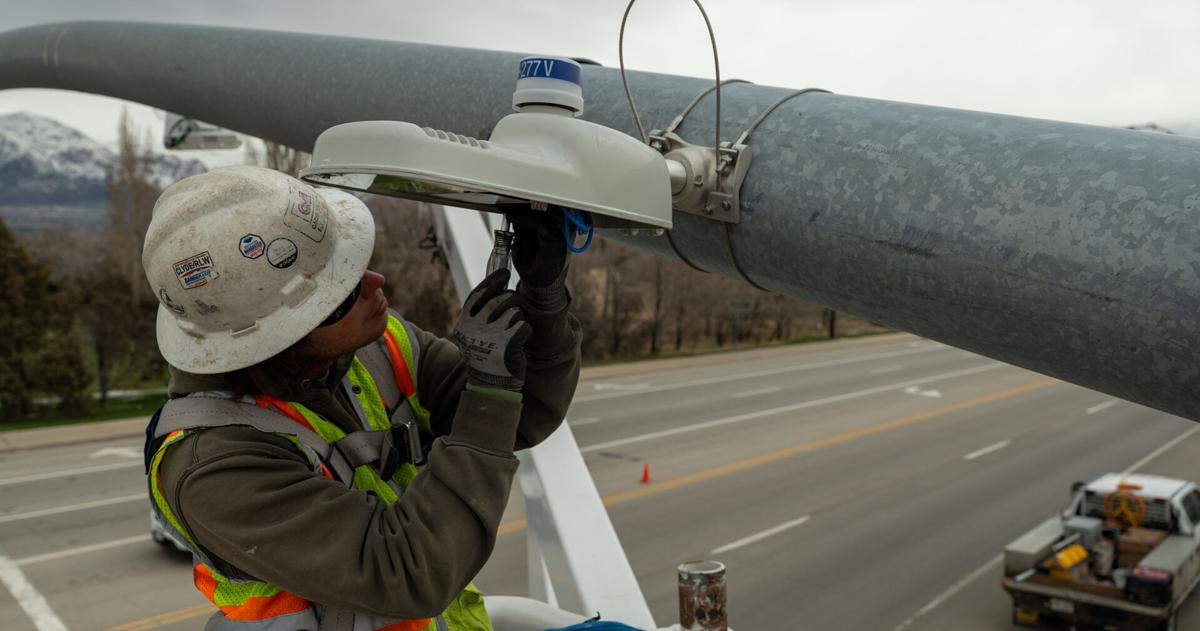SALT LAKE CITY — The Utah Department of Transportation (UDOT) is installing new lights across the state to improve safety for pedestrians at intersections.
Under-mast lights are a simple innovation created by UDOT engineers to add lighting to areas where typical lighting can’t be installed. They create a spotlight in the exact area where someone may be walking, jogging or rolling across.
To date, UDOT has installed approximately 150 lights across the state. In the past week alone, crews have installed units in Ogden and St. George, with plans for more lights across the state in the near future.
UDOT Traffic Signal Supervisor David Townsend said that crosswalk users can often see a car before the car sees them, especially at night. Under-mast lights immediately help a driver notice areas where they should be cautious. The lights will help crosswalk users and motorists be safer, and confidently navigate to their destinations.
UDOT officials explained that each under-mast lighting unit consists of an LED light that can be attached to the bottom of a pre-existing signal pole’s arm, eliminating the need to pay for and install an entire new light post. The design also helps avoid complications with overhead power lines, which are often too close to safely work around.
By adding more light to intersections, engineers hope to improve safety for pedestrians and other vulnerable road users. Since 2019, Utah roads have seen an average of 43 pedestrian fatalities, with nine having occurred so far this year.
Townsend explained that under-mast lights may seem like a small change, but adaptations like this are really important.
Installations are prioritized according to several sources of data UDOT has been collecting since the pandemic, including areas with little to no lighting, pedestrian crashes and other, area-specific safety information.
UDOT will continue to watch for upcoming projects in areas where lighting is needed, with the goal to bolster lighting at the crosswalks of every state-owned signalized intersection within the next five years.

